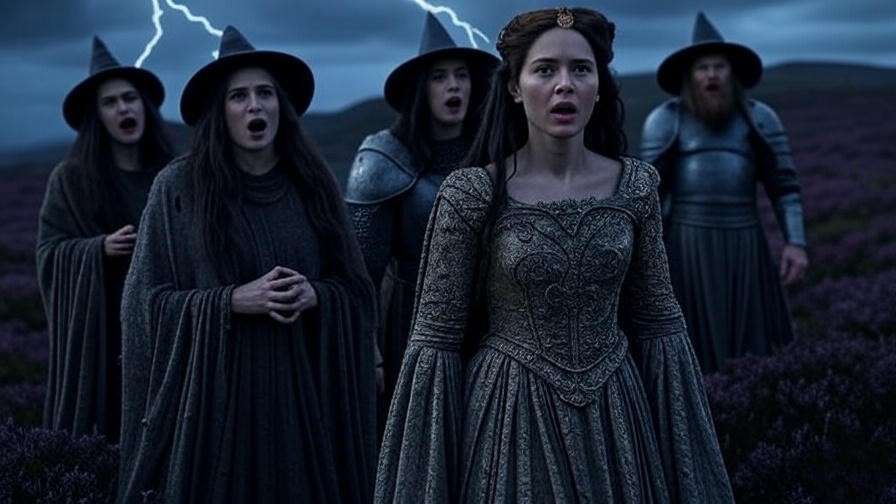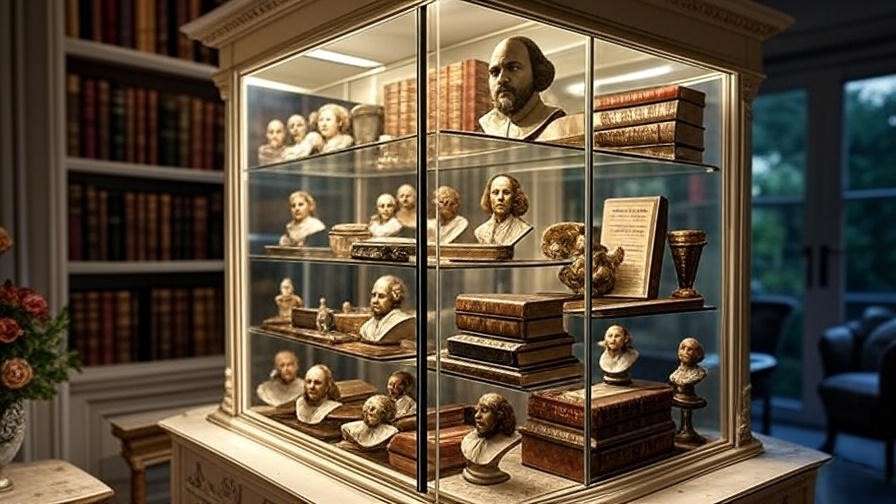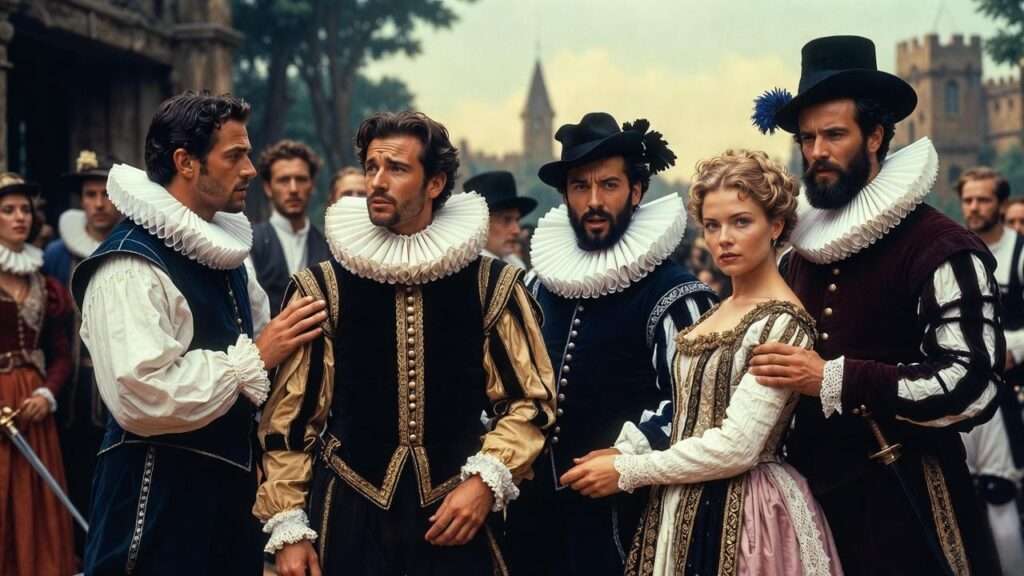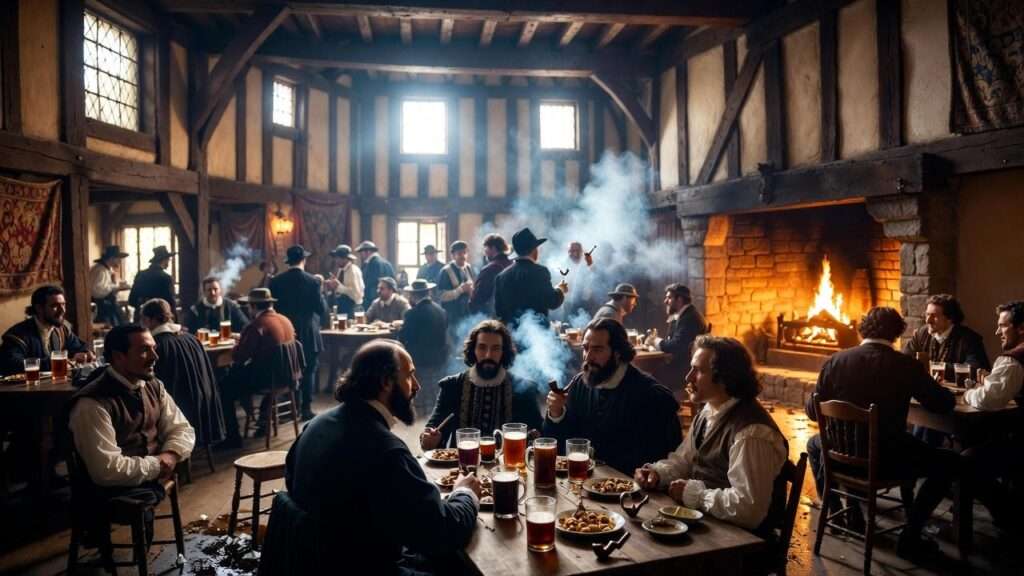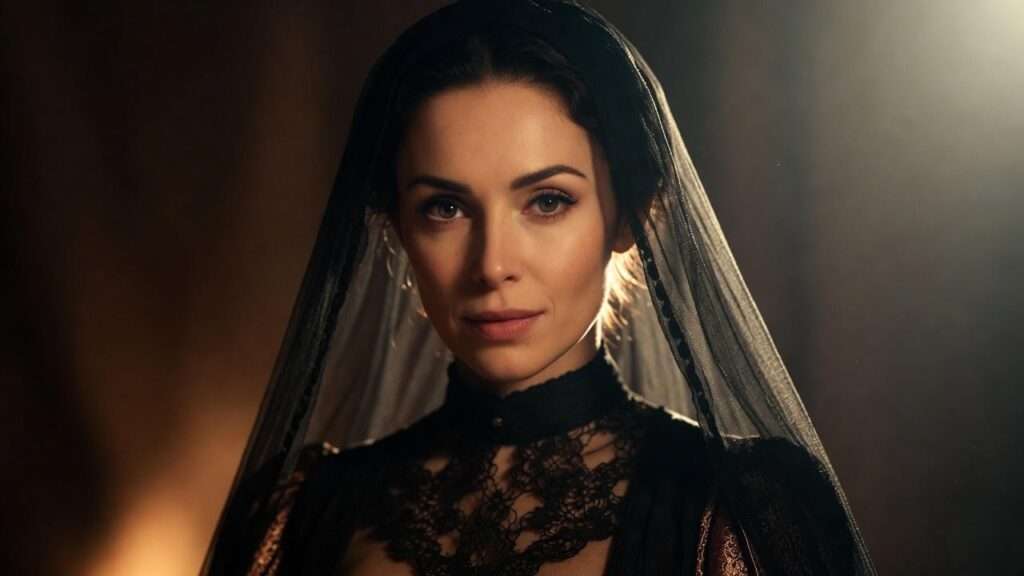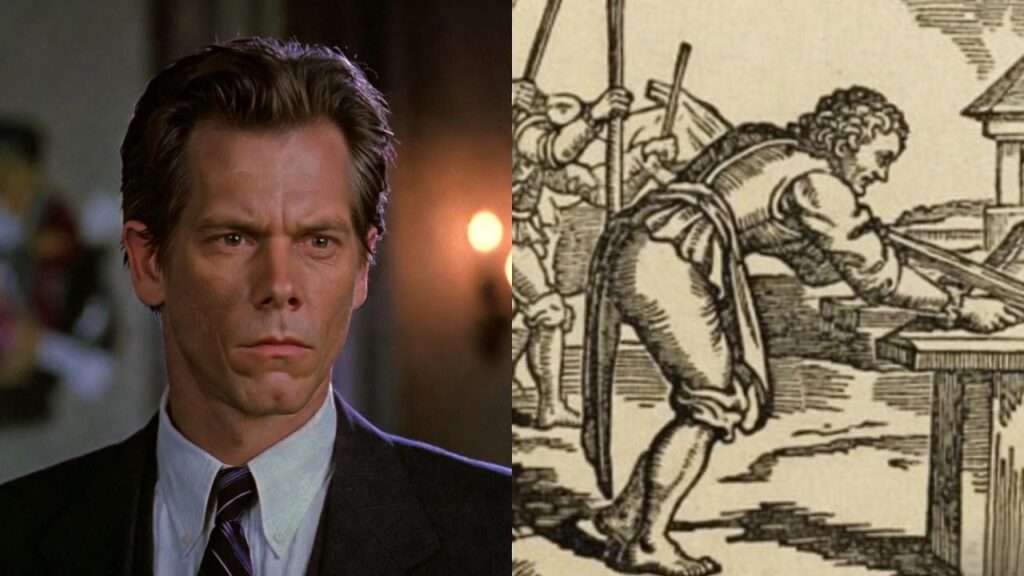Picture a desolate Scottish heath, shrouded in mist and thunder, where three witches chant cryptic prophecies that will unravel a man’s soul. This haunting opening of Macbeth Act 1 sets the stage for William Shakespeare’s timeless tragedy of ambition, betrayal, and moral decay. For students, theater enthusiasts, and literature lovers searching for a Macbeth Act 1 summary, this article offers a detailed, accessible, and expert-driven exploration of the play’s pivotal first act. Whether you’re studying for an exam, preparing for a performance, or simply diving into Shakespeare’s world, understanding Act 1 is essential to grasping the tragic arc of Macbeth. Drawing on scholarly insights, theatrical interpretations, and close textual analysis, this comprehensive guide illuminates the characters, themes, and literary brilliance that make Act 1 a cornerstone of the play.
Overview of Macbeth and Its Historical Context
The World of Macbeth
Macbeth, one of Shakespeare’s darkest tragedies, explores the destructive power of unchecked ambition and the fragility of the human conscience. Set in medieval Scotland, the play unfolds in a world of political intrigue, supernatural forces, and brutal warfare. Written around 1606, Macbeth resonated with Elizabethan audiences, particularly King James I, who was fascinated by witchcraft and had a personal connection to the play’s Scottish setting. Shakespeare drew inspiration from Holinshed’s Chronicles, adapting historical accounts of Macbeth’s reign to craft a psychological drama that remains relevant today. Act 1 introduces the key players—Macbeth, Lady Macbeth, the witches, and King Duncan—while establishing the moral and thematic groundwork for the tragedy.
Why Act 1 Matters
Act 1 of Macbeth is the foundation of the entire play, hooking audiences with its eerie supernatural elements and plunging them into the moral dilemmas that drive the story. It introduces the witches’ prophecy, which ignites Macbeth’s ambition, and showcases Lady Macbeth’s ruthless resolve. For readers seeking a Macbeth Act 1 summary, this act is critical because it sets up the central conflict: Macbeth’s internal struggle between loyalty and ambition. By dissecting each scene, we uncover how Shakespeare masterfully weaves themes of fate, power, and deception, making Act 1 a perfect entry point for understanding the play’s deeper meanings.
Scene-by-Scene Summary of Macbeth Act 1
Scene 1: The Witches’ Prophecy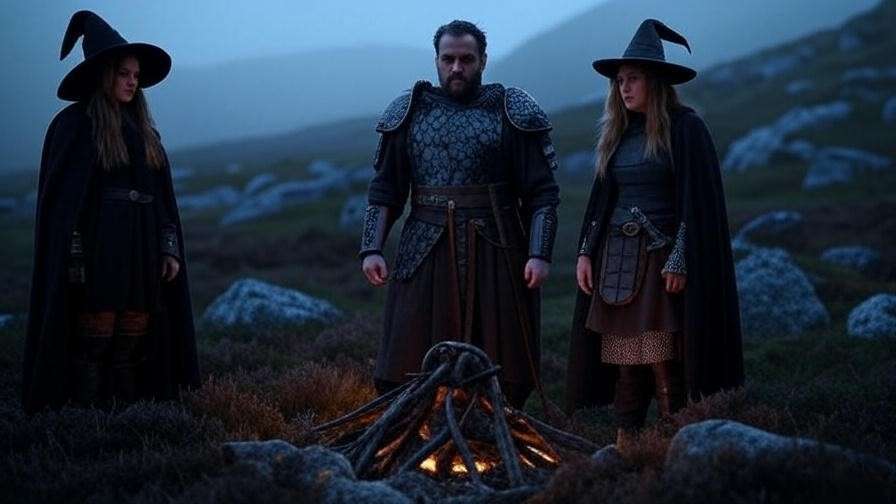
The play opens on a stormy heath, where three witches—often called the Weird Sisters—meet amidst thunder and lightning. Their cryptic chant, “Fair is foul, and foul is fair,” establishes the play’s central paradox, where appearances deceive and morality blurs. The witches plan to meet Macbeth, prophesying his rise to power and planting the seeds of chaos. This brief but chilling scene sets a supernatural tone, foreshadowing the moral upheaval to come. Scholar Stephen Greenblatt notes that the witches embody the Jacobean fear of the unknown, serving as catalysts for Macbeth’s tragic choices (Greenblatt, 2004).
Scene 2: Reports of Macbeth’s Valor
In a stark contrast to the witches’ eerie world, Scene 2 shifts to a battlefield where King Duncan learns of Macbeth’s heroic deeds. A wounded Captain recounts how Macbeth, Thane of Glamis, defeated the traitor Macdonwald with unmatched bravery. Ross then reports that Macbeth and Banquo triumphed over the Norwegian forces, securing Scotland’s safety. Impressed, Duncan declares the treacherous Thane of Cawdor’s execution and bestows the title on Macbeth, unknowingly fulfilling part of the witches’ prophecy. This scene establishes Macbeth as a loyal warrior, setting up the tragic irony of his later betrayal. Tip: For students, note how this scene highlights Macbeth’s initial virtue, making his fall more poignant.
Scene 3: The Witches’ Encounter with Macbeth and Banquo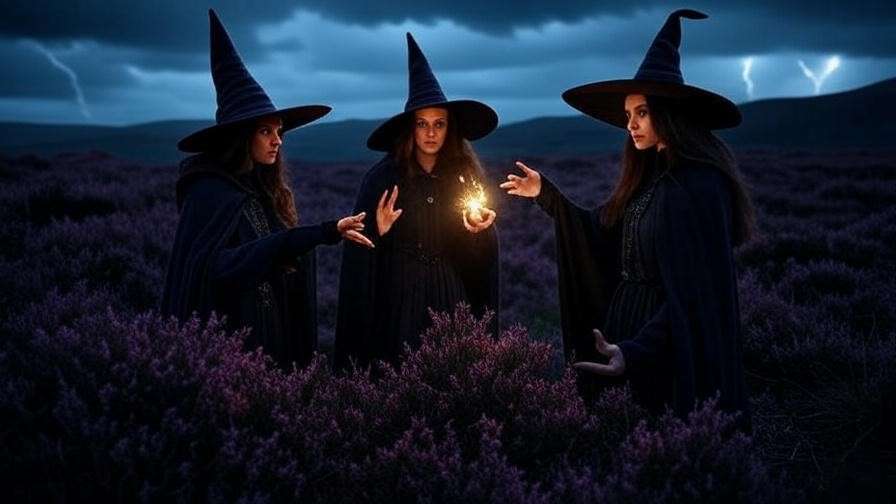
On the heath, the witches reappear, confronting Macbeth and Banquo after their battlefield victories. They hail Macbeth as Thane of Glamis, Thane of Cawdor, and “king hereafter,” while predicting that Banquo’s descendants will inherit the throne. Macbeth is stunned, his ambition stirred by the prophecy, though he questions its truth. Banquo, more skeptical, warns of the witches’ deceptive nature. When Ross confirms Macbeth’s new title as Thane of Cawdor, the prophecy gains credibility, and Macbeth’s mind races with dark thoughts: “Why do I yield to that suggestion / Whose horrid image doth unfix my hair” (1.3.134–135). This scene marks the birth of Macbeth’s ambition, a theme that resonates with readers exploring human desire and moral conflict.
Scene 4: Duncan’s Trust and Macbeth’s Ambition
At the royal court, Duncan praises Macbeth and Banquo for their loyalty, naming his son Malcolm as heir to the throne. Macbeth, now aware of the witches’ prophecy, sees Malcolm as an obstacle to his kingship. In a revealing aside, he confesses his “black and deep desires” to seize the crown, hinting at his willingness to commit treachery (1.4.51). The dramatic irony is palpable: Duncan trusts Macbeth completely, unaware of the danger lurking within his loyal subject. This scene deepens the tension, showing how ambition begins to corrupt Macbeth’s moral compass.
Scene 5: Lady Macbeth’s Resolve
At Macbeth’s castle, Lady Macbeth reads a letter from her husband detailing the witches’ prophecy. Instantly, she resolves to make him king, fearing his “nature… too full o’ th’ milk of human kindness” will hinder their ambition (1.5.15). In a chilling soliloquy, she calls on dark spirits to “unsex” her, stripping away compassion to steel her resolve (1.5.40). When Macbeth arrives, she urges him to act decisively, setting the stage for their murderous plot. Feminist scholars like Jenijoy La Belle argue that Lady Macbeth’s rejection of traditional femininity reflects her hunger for power in a patriarchal world (La Belle, 1980). This scene showcases her as a formidable force, driving the tragedy forward.
Scene 6: Duncan’s Arrival at Macbeth’s Castle
King Duncan arrives at Macbeth’s castle, greeted with warmth by Lady Macbeth. The castle’s “pleasant seat” deceives Duncan, who praises its serene atmosphere (1.6.1). This scene is steeped in irony, as the audience knows Lady Macbeth’s hospitality masks a sinister plan. The contrast between the serene setting and the impending murder heightens suspense, drawing readers into the moral complexity of the play. For theatergoers, this scene’s tension is palpable in productions, such as the Royal Shakespeare Company’s 2018 staging, where lighting and sound underscore the deceptive calm.
Scene 7: Macbeth’s Doubt and Lady Macbeth’s Persuasion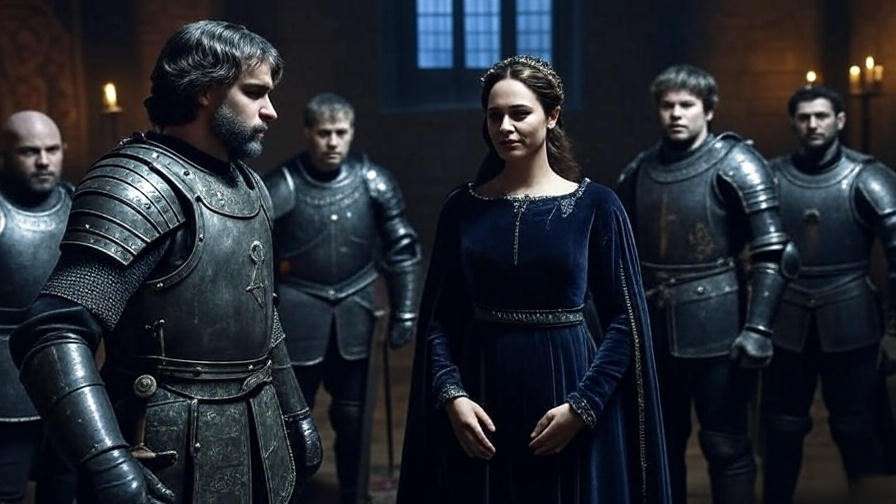
In a powerful soliloquy, Macbeth wrestles with the morality of murdering Duncan, acknowledging the king’s virtue and his own loyalty. He fears divine and earthly consequences, yet his ambition persists. Lady Macbeth interrupts, challenging his manhood and outlining a plan to kill Duncan while framing his servants. Her relentless persuasion prevails, and Macbeth resolves to act: “I am settled, and bend up / Each corporal agent to this terrible feat” (1.7.79–80). This scene cements their partnership in crime, highlighting Lady Macbeth’s influence and Macbeth’s tragic capitulation. Example: Students can use this soliloquy to analyze Macbeth’s internal conflict for essays or discussions.
Key Themes Introduced in Act 1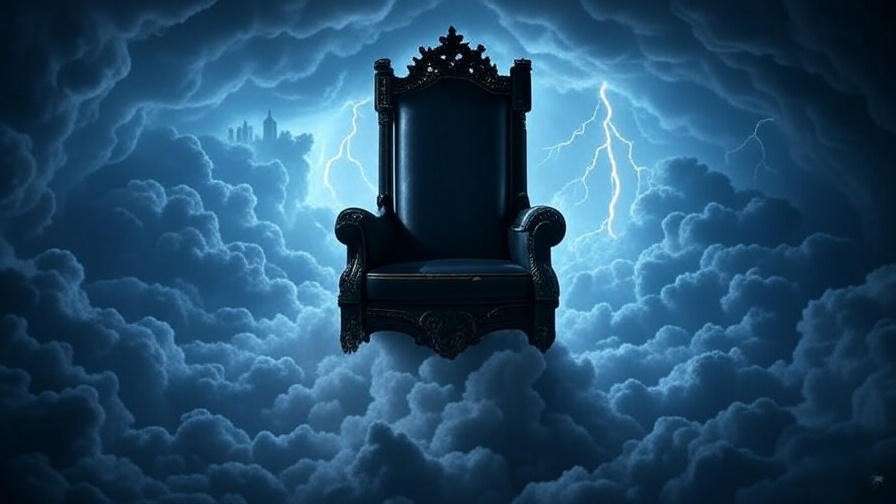
Ambition and Its Consequences
Act 1 introduces ambition as the driving force of Macbeth’s tragedy. The witches’ prophecy sparks Macbeth’s desire for power, while Lady Macbeth amplifies it with her ruthless determination. This theme resonates universally, as readers recognize the dangers of unchecked ambition in personal and political spheres. Shakespeare illustrates how ambition, when divorced from morality, leads to self-destruction, a lesson that remains relevant in modern contexts like corporate greed or political scandals.
Fate vs. Free Will
The witches’ prophecy raises the question of whether Macbeth’s actions are fated or chosen. Are the Weird Sisters controlling his destiny, or do they merely tempt him to act on his desires? Scholars like A.C. Bradley argue that Macbeth’s free will drives his choices, as he consciously pursues the crown (Bradley, 1904). This tension captivates readers, inviting them to ponder the balance between destiny and agency in their own lives.
Appearance vs. Reality
The motif of “fair is foul” permeates Act 1, from the witches’ deceptive prophecies to Lady Macbeth’s false hospitality. Duncan’s trust in Macbeth exemplifies how appearances can mask treacherous intentions. This theme invites readers to question trustworthiness and hidden motives, a concept that resonates in today’s world of misinformation and facades.
Gender and Power
Lady Macbeth’s rejection of traditional femininity—calling to be “unsexed”—challenges Elizabethan gender norms. Her ambition and agency make her a complex figure, both admired and vilified. Modern feminist readings, such as those by Carol Thomas Neely, highlight her as a subversive force in a male-dominated society (Neely, 1980). This theme engages readers interested in gender dynamics and power struggles.
Character Analysis in Act 1
Macbeth: The Tragic Hero
Macbeth begins Act 1 as a valiant warrior, loyal to Duncan, but the witches’ prophecy awakens his latent ambition. His soliloquies reveal a man torn between honor and desire, making him a relatable tragic hero. His internal conflict—evident in lines like “Stars, hide your fires; / Let not light see my black and deep desires” (1.4.50–51)—humanizes him, drawing readers into his psychological journey.
Lady Macbeth: The Driving Force
Lady Macbeth emerges as a powerhouse, her ambition surpassing her husband’s. Her manipulation and resolve propel the plot, as she pushes Macbeth toward murder. Her invocation of dark spirits and rejection of compassion make her a compelling figure, challenging traditional notions of femininity. Her complexity captivates readers and performers alike, as seen in iconic portrayals by actresses like Judi Dench.
The Witches: Catalysts of Chaos
The Weird Sisters are enigmatic figures, blending supernatural menace with ambiguity. Their prophecies ignite the play’s conflict, but their true power—whether divine or manipulative—remains unclear. In Jacobean England, their presence tapped into fears of witchcraft, as documented in King James I’s Daemonologie. For modern readers, they symbolize temptation and chaos, adding a layer of intrigue to the narrative.
Supporting Characters (Duncan, Banquo, Malcolm)
King Duncan represents trust and benevolence, making his betrayal all the more tragic. Banquo, a foil to Macbeth, remains skeptical of the witches, highlighting his integrity. Malcolm, named Duncan’s heir, sets up future conflicts. These characters enrich the story, providing contrast and context for Macbeth’s descent.
Literary Devices and Language in Act 1
Imagery and Symbolism
Shakespeare’s vivid imagery—blood, darkness, storms—creates a foreboding atmosphere. The witches’ “fair is foul” paradox symbolizes the moral inversion that defines the play. Blood imagery, as in Macbeth’s vision of a dagger, foreshadows violence, while darkness reflects his inner turmoil. These elements deepen the play’s emotional impact, engaging readers and performers.
Soliloquies and Asides
Macbeth’s soliloquies, such as his reflection on murdering Duncan, reveal his psychological complexity. These moments of introspection allow readers to connect with his moral struggle, showcasing Shakespeare’s skill in crafting layered characters. For students, these passages are goldmines for textual analysis.
Dramatic Irony
Dramatic irony abounds in Act 1, particularly in Duncan’s trust in Macbeth and the serene facade of the castle. This technique heightens suspense, as the audience anticipates the betrayal. Theater productions often amplify this irony through staging, such as contrasting warm lighting with ominous undertones.
Why This Summary Matters for Readers
For Students
A detailed Macbeth Act 1 summary is a lifeline for students tackling Shakespeare’s complex language and themes. Act 1 introduces the play’s core conflicts and characters, making it a critical starting point for essays, exams, or class discussions. By breaking down each scene, this guide helps students identify key quotes, such as Macbeth’s “If it were done when ’tis done” (1.7.1), for analyzing his moral dilemma. Tip: To excel in assignments, focus on how Act 1 establishes Macbeth’s tragic flaw—ambition—and use quotes to support arguments about his character development. This summary also aligns with curriculum needs, offering clarity for AP Literature, IB, or GCSE students.
For Theater Enthusiasts
Act 1 is a theatrical gem, setting up dramatic tension that captivates audiences. The witches’ eerie chants, Macbeth’s intense soliloquies, and Lady Macbeth’s chilling resolve create a dynamic stage experience. Productions like the Royal Shakespeare Company’s 2018 Macbeth used stark lighting and haunting soundscapes to amplify the witches’ supernatural presence, while Lady Macbeth’s soliloquy often steals the show in performances. This summary helps theatergoers appreciate how Act 1’s pacing and imagery translate to the stage, enhancing their understanding of directorial choices and actor interpretations.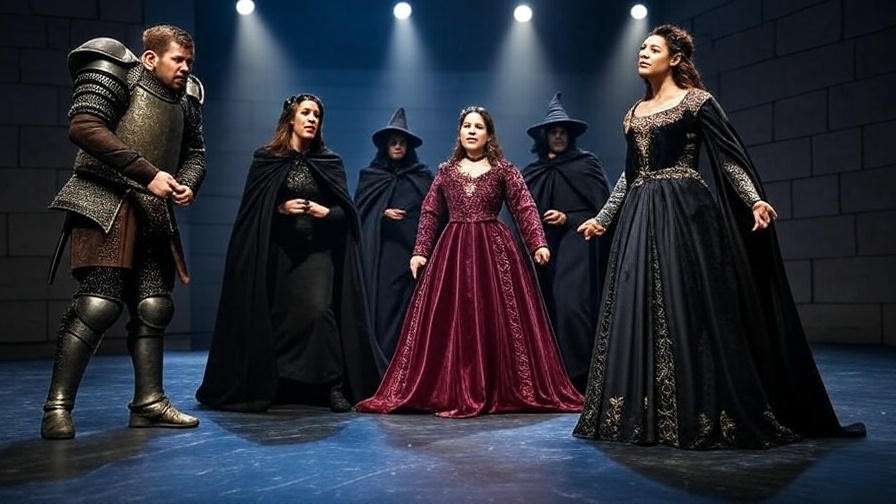
For General Readers
For those reading Macbeth for pleasure, Act 1 offers universal themes that resonate today. Ambition drives corporate and political scandals, while the tension between fate and free will mirrors personal decision-making. Lady Macbeth’s manipulation reflects modern power dynamics, making her a fascinating study in influence. This summary provides context and insights, helping casual readers connect with Shakespeare’s timeless exploration of human nature. By unpacking the psychological and thematic depth of Act 1, it enriches the reading experience and invites reflection on morality and choice.
FAQs About Macbeth Act 1
Question 1: What is the significance of the witches in Act 1?
The witches serve as catalysts, igniting Macbeth’s ambition with their prophecy. They symbolize fate, chaos, and temptation, reflecting Jacobean fears of witchcraft as outlined in King James I’s Daemonologie. Their ambiguous role—do they control Macbeth or merely tempt him?—sparks debate, making them a focal point for analysis.
Question 2: How does Lady Macbeth influence Macbeth in Act 1?
Lady Macbeth is the driving force behind Macbeth’s decision to murder Duncan. Her ruthless ambition and manipulation, particularly in Scene 7, overcome his moral hesitation. By challenging his masculinity and devising a plan, she transforms his ambition into action, cementing their partnership in crime.
Question 3: What are the main themes introduced in Act 1?
Act 1 introduces ambition, fate versus free will, appearance versus reality, and gender and power. These themes, explored through the witches’ prophecy, Macbeth’s soliloquies, and Lady Macbeth’s resolve, lay the groundwork for the play’s tragic arc and resonate with modern audiences.
Question 4: Why is Duncan’s trust in Macbeth ironic?
Duncan’s trust in Macbeth is ironic because the audience knows Macbeth is contemplating his murder. This dramatic irony, evident in Scenes 4 and 6, heightens suspense and underscores the theme of appearance versus reality, as Duncan’s faith blinds him to Macbeth’s treachery.
Question 5: How can I use this summary for studying Macbeth?
Use this summary to identify key scenes, quotes, and themes for essays or exams. For example, analyze Macbeth’s soliloquy in Scene 7 for his internal conflict or the witches’ prophecy for fate versus free will. Cross-reference with academic sources like the Folger Shakespeare Library for deeper insights.
Act 1 of Macbeth is a masterclass in storytelling, weaving supernatural intrigue, psychological depth, and moral complexity into a gripping introduction to Shakespeare’s tragedy. From the witches’ cryptic prophecy to Lady Macbeth’s ruthless ambition, the act sets the stage for Macbeth’s descent into betrayal and guilt. This Macbeth Act 1 summary offers students, theater enthusiasts, and general readers a clear, engaging, and expert-driven guide to understanding the play’s foundation. As scholar Stephen Greenblatt observes, “Macbeth is a profound meditation on the human capacity for self-destruction” (Greenblatt, 2004), and Act 1 is where that journey begins. Dive deeper into the play by exploring Act 2 on our blog, revisiting Act 1’s key scenes, or sharing your thoughts in the comments. For further reading, visit the Folger Shakespeare Library or explore JSTOR for scholarly articles on Macbeth.

